The boat motors over the swells, as five pairs of eyes strain across the ocean’s vastness. Each of us stares, trying to find a clue amidst the waves. A resting seabird, a bit of black. As I steal a glimpse at my fellow crew members, I can’t help but think that we’re reenacting a scene from Moby Dick.
But we’re not seeking whales. We’re trying to intercept a Fish Aggregating Device, known in industry parlance as a FAD.
We’re off the coast of Palmyra Atoll, a string of islands 1,000 miles south of Hawaii with no permanent inhabitants. It’s now a national wildlife refuge, and thanks to conservation efforts by The Nature Conservancy and U.S. Fish & Wildlife Service, it’s known for its massive seabird colonies, diversity of land crabs and a healthy coral reef.
A drifting FAD can have severe consequences for the coral reef and its inhabitants. Our job this afternoon is to find the FAD before it does.
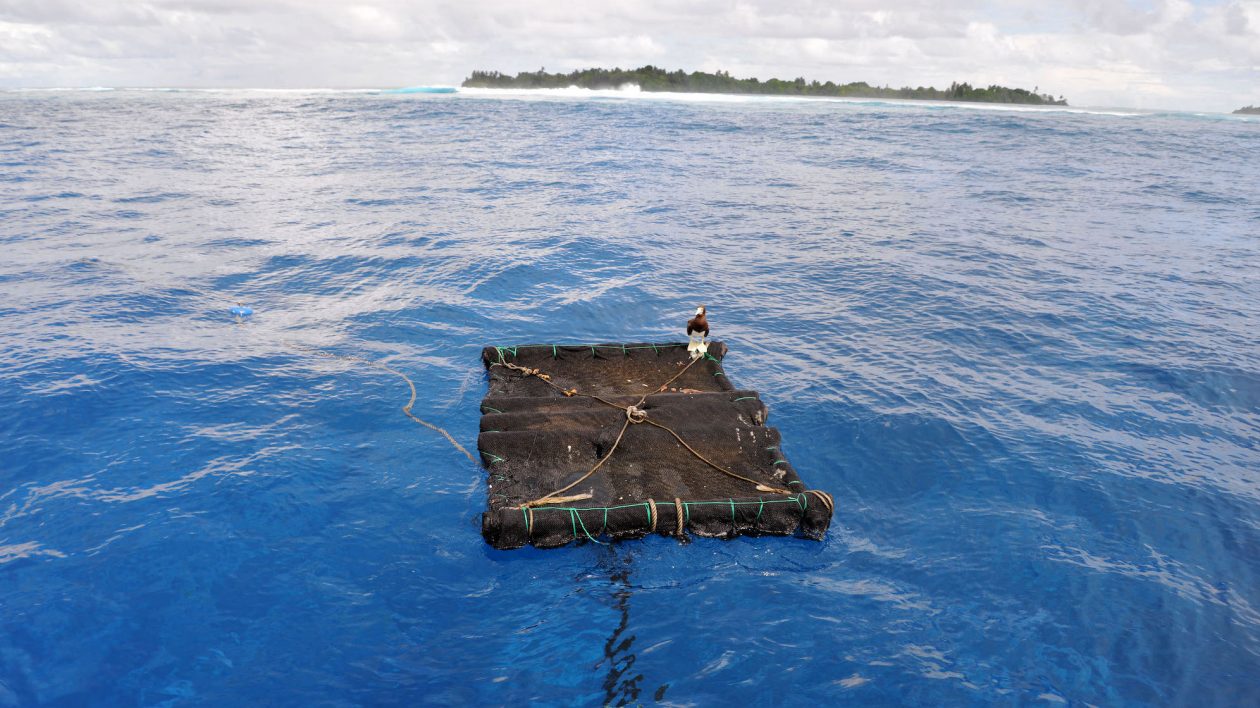
On the surface, the FAD is a raft or other floating structure connected to a round or flat satellite buoy used by the fishing vessel to track the FAD.
Put this buoy out in the ocean and, well, it feels a bit like finding a needle in a haystack. In fact, this is repeatedly muttered by the crew as our eyes scan to the horizon. “We’re looking for a needle in a haystack.”
A very large, seemingly endless haystack.
But we also know that’s not really the case. This is not a random search. We know the FAD is in the vicinity, very close to the coral reef. Each of us wants to be the one to see the FAD first. We know one of us will. We will intercept the FAD before it hits the reef.
That is thanks to an innovative partnership called FAD Watch Program between conservation and industry, specifically the US tuna fishing fleet, that is remotely tracking FADs to protect Palmyra, and provide important oceanographic data as well.
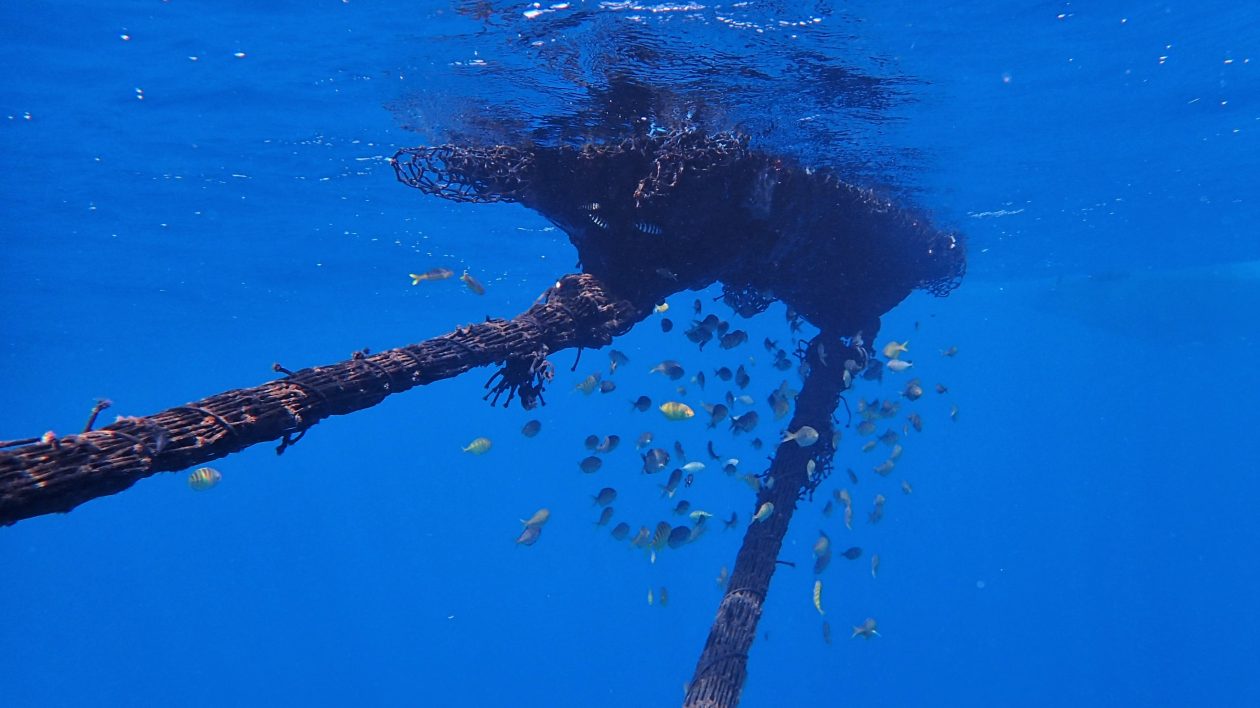
What is a FAD?
What exactly is a Fish Aggregating Device? At first glance, it might look like a raft with a net hanging beneath, but the FAD doesn’t catch fish, not directly at least.
It is a floating device designed to attract pelagic fish, which can then be targeted by commercial fishers. Recreational anglers and snorkelers will know that fish are attracted to structure. I think of the bass anglers at local lakes who sink Christmas trees and brush to attract their quarry.
A FAD is somewhat similar, except it floats across the ocean. The FAD includes a raft or other floating structure, a buoy, and hanging material below including wrapped netting, ropes and organic material like palm fronds. Marine plants, mollusks and crustaceans like small crabs settle on this structure, and a wide variety of fish including yellowfin, skipjack and bigeye tuna aggregate underneath the structure.
At any given time, there are an estimated 30,000 FADs deployed in the Pacific. They are often tracked via satellite, but given the sheer number of devices, some drift away from the fleets fishing area and the retrieval is not cost-effective often due to fishing regulations. In other instances, the fleet is legally unable to retrieve them in areas where they don’t have fishing access.
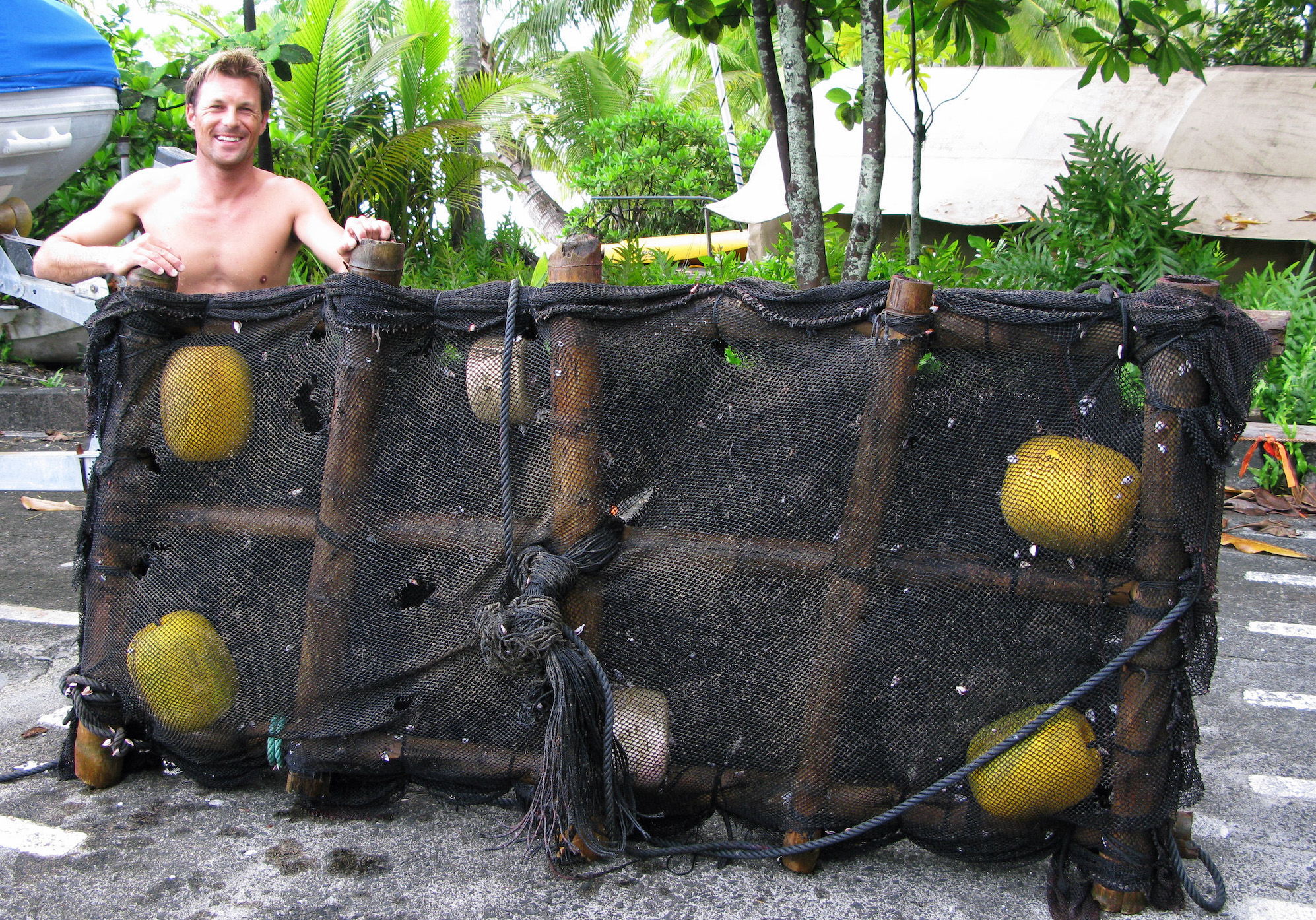
On the Beach
Kydd Pollock, fisheries science manager for The Nature Conservancy’s Palmyra program, was scanning the beach in Palmyra, searching for anything interesting. He saw an odd shape sticking out and recognized it immediately. A FAD. The year was 2008.
If we’re going to push the Moby Dick comparisons a bit farther, think of Pollock as a cheerier, friendlier version of Captain Ahab. His friends and colleagues will repeat that no one has as deep a passion for marine conservation and all things saltwater. He grew up on charter boats, and has spent his life on the water fishing, exploring, researching and developing conservation programs.
Finding that FAD got him thinking and searching. He found more FADs, some offshore but most in Palmyra’s lagoons or on the beach. He recorded the locations on an Excel sheet, but wanted more information.
“I wanted to know where they came from,” says Pollock. “I would try to discover identifying marks on the buoy. But none could provide me the information I wanted.”
Pollock says that as the FAD approaches Palmyra, the waves carry the floating structure, buoy and netting below onto the reef, potentially causing significant coral damage.
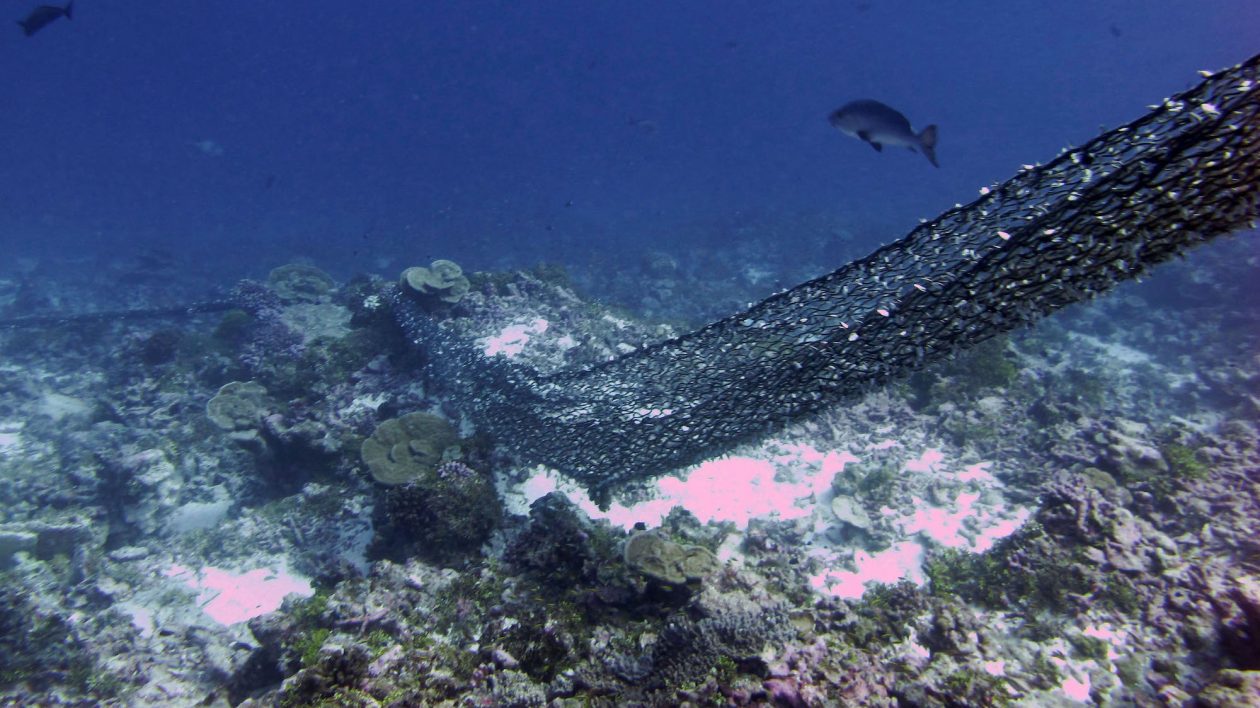
He started noticing some important clues on the FADs he was finding. “Almost all of the FADs recovered were very clean,” he says. “There was little algal cover or barnacles. They hadn’t been drifting very long.”
Palmyra Atoll is part of a Marine National Monument (MPA), and no commercial fishing is allowed in its boundaries. However, the U.S. Tuna Purse Seine Fleet is the only commercial tuna fleet allowed to legally operate outside the Marine Protected Area boundaries. (It should be noted that only a few of the stranded FADs that Pollock found came from the U.S. purse seine fleet, with some writing found on the buoys proving that. The majority of the stranded FADs likely were from vessels with Asian flags).
As it happened, the U.S. Tuna Purse Seine Fleet had been working on collaborative fisheries projects with The Nature Conservancy, developing solutions that benefited both conservation and the industry. This had also built a lot of mutual trust.
Pollock saw an opportunity.
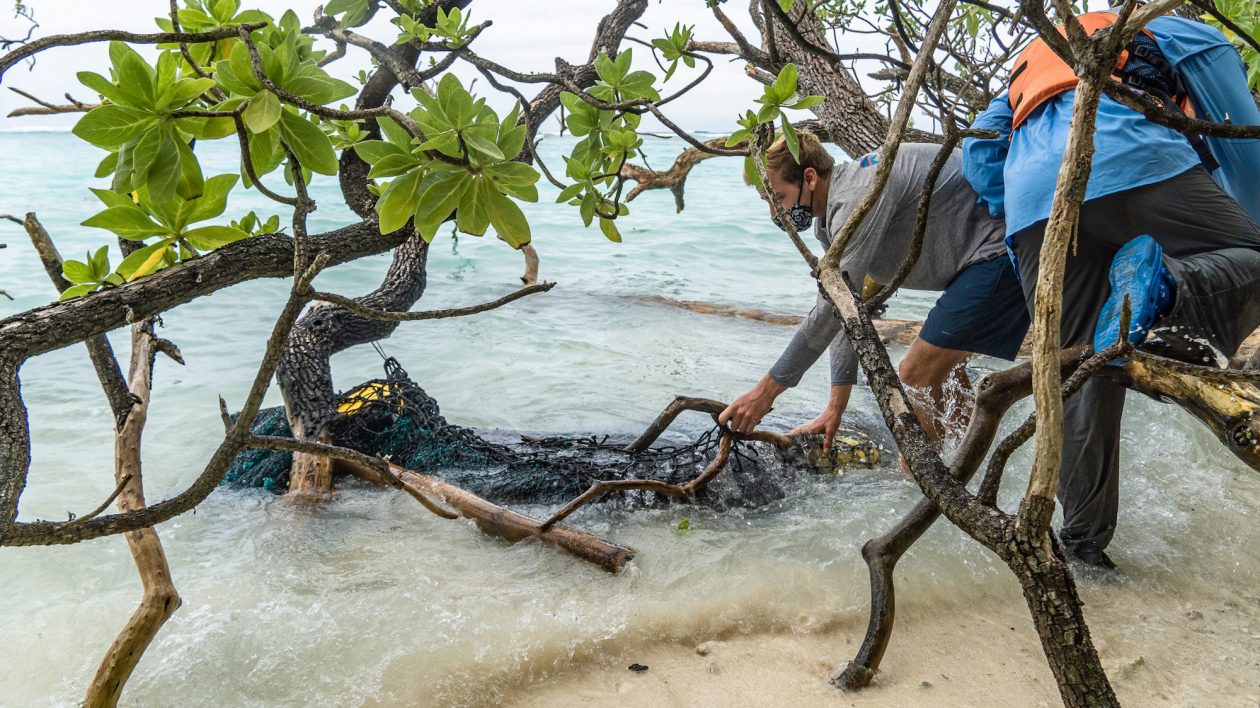
A Conservation/Industry Partnership
Pollock proposed using the FAD buoy satellite technology to track FADs if they drifted into the Marine National Monument. The Nature Conservancy would cover all costs of program implementation including the satellite vendor account set up, data transfer account for monthly transfers, and oceanographic software. When a FAD drifted into the monument’s waters, TNC would be able to access the drift-track data. The companies would pay the satellite position fees and have supported increasing the period of transmissions so TNC could receive the highest resolution data possible.
It would be a pilot project in tracking drifting FADs (the first of its kind in the Pacific Ocean), and Palmyra appeared to be a perfect location. Co-managed by TNC and the U.S. Fish and Wildlife Service, the atoll had an infrastructure to allow conservationists to operate. TNC has a research station on the island, and more than 20 years conducting research and conservation projects.
“This was an opportunity to turn a FAD into a conservation tool,” says Nicholas Wolff, senior climate and environmental change scientist for TNC. “It would allow us to gain insights on oceanography that we wouldn’t be able to get any other way. And in the process, we could potentially intercept the FADs before they reached the reef.”
This would be another step in that process, and the US tuna fishing companies committed to the tracking program by authorizing access to the satellite buoy positions as they drift within the MPA, which became known as the Palmyra FAD Watch Program.
“It is really a dream collaboration between industry and conservation,” says Wolff. “These are important fishing tools for the industry, designed for open ocean fish procurement, and they don’t want to cause harm to fragile coral reefs. This is a project that has mutual benefit.”
Cary Gann, spokesperson for the US Pacific Tuna Group of fishing companies (who are among the participants in this FAD watch program), says, “The USPTG fully supports research on the potential impacts of FADs on sensitive habitats and ecosystems due to beaching and is committed to developing effective strategies to mitigate negative impacts as part of comprehensive FAD management plan adopted by the Group in 2020.”
Gann notes that the development and trial of FAD retrieval programs is a key element of the USPTG FAD management plan so partnering with The Nature Conservancy on the Palmyra FAD Watch program was a natural fit and great opportunity.
“The US tuna vessel owners are proud to participate in a program for the protection of sensitive coastal habitats within US waters, even though they cannot fish within the MPA,” Gann adds. “We hope that the FAD Watch program will serve as a model for FAD retrieval programs throughout the Pacific.”
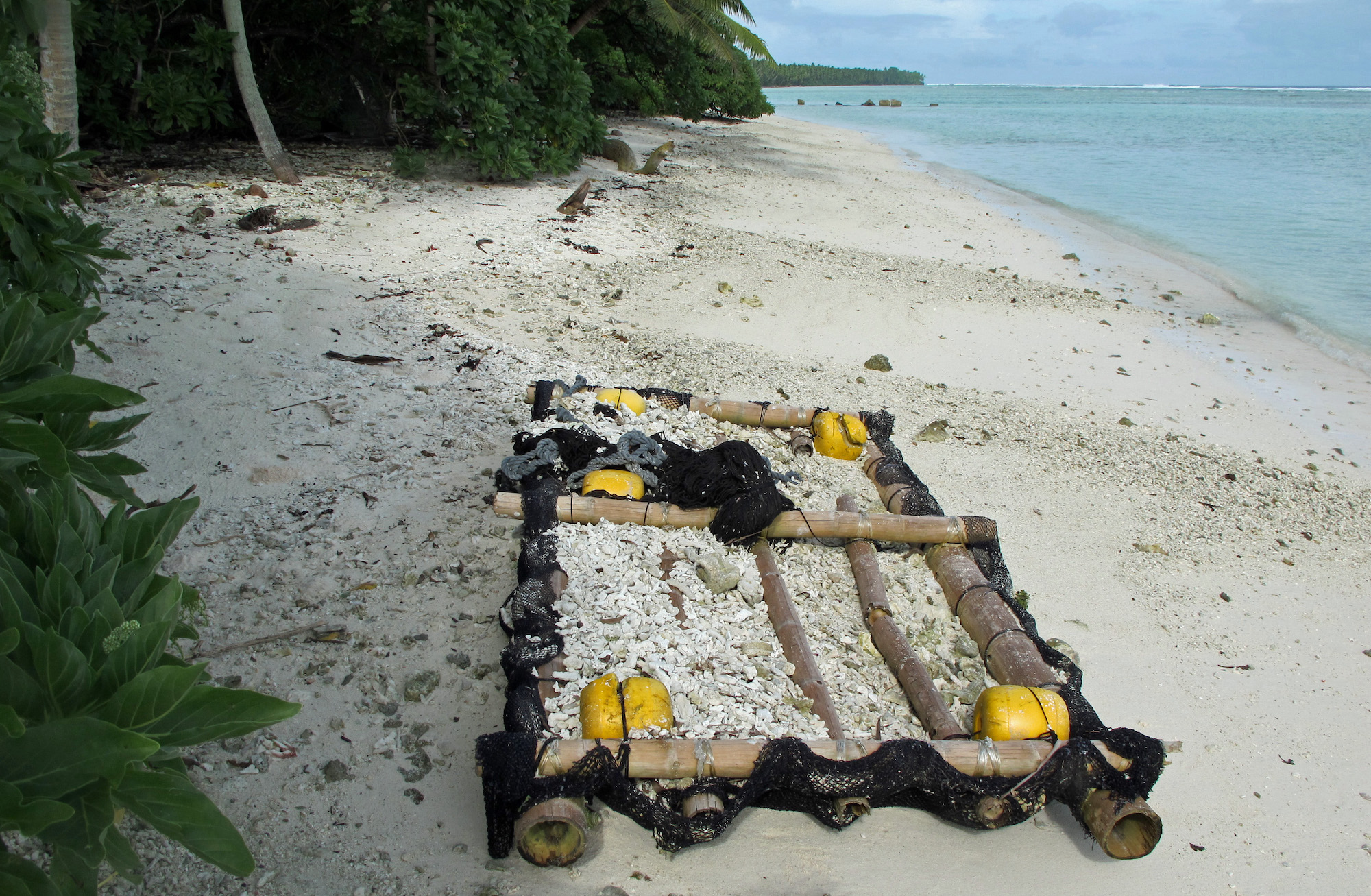
To Retrieve a FAD
For Nick Wolff, the FAD Watch program is a treasure trove of data. Using Satlink software, the drifting FADs transmit data he can access including sea surface temperature, currents and thermocline depths. The FAD transmits its location every four hours, which provides important data, but Wolff hopes the next step is more fine-scale reporting.
From his office in Maine, Wolff sends coordinates of the FADs to Pollock, at the research base on Palmyra.
I joined Pollock at the atoll primarily to catch and tag giant and bluefin trevally for another research project. But every day, Pollock received the FAD data, checking the locations within the monument to see if any were drifting toward Palmyra’s shores.
A couple days after my arrival, he announced, “There’s a FAD heading our way.”
Joining us would be Kawika Auld, a participant in the fishery research program, and Keith Oney, a seasonal maintenance staffer on Palmyra. High hopes for finding the FAD quickly faded in the face of rough seas and gray skies. The need for finer-scale data became apparent, as we knew a FAD was in the area, but couldn’t locate it precisely. The needle in the haystack.
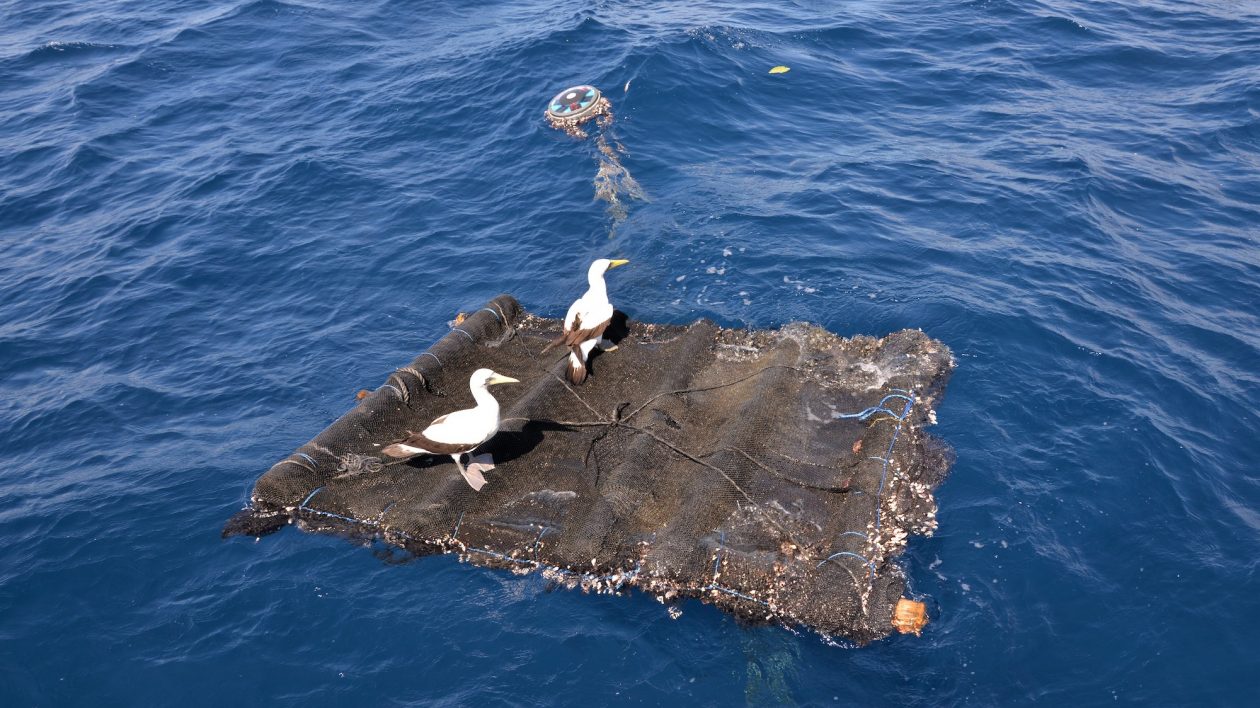
After thorough searching, Pollock said we’d resume catching fish for research. In the ocean, this involved deploying hand lines, long ropes to which a lure was attached. Oney, who had retired from a career in the Navy, had been working on maintenance at the atoll for months. The remote outpost had a never-ending string of jobs to do. The chance to catch and tag fish was a welcome respite, almost a holiday.
Still, the wiry, tanned Oney looked unsatisfied as he watched the lure trail behind the boat. Suddenly he made up his mind.
“Matt, take my fishing line,” he announced. “I’m going to find that FAD.”
Minutes later, it appeared he did. “There’s something out there. I see it!” he called.
There were excited whoops as we located the FAD. We donned snorkel gear to see one up close. We jumped in and swam around it, seeing a large school of juvenile golden trevally around it: the baitfish that would lure in bigger species. Then we pulled up the buoy and trailing length of ropes and netting.
It provided a trial run for a few days later, when a five-person crew would search.
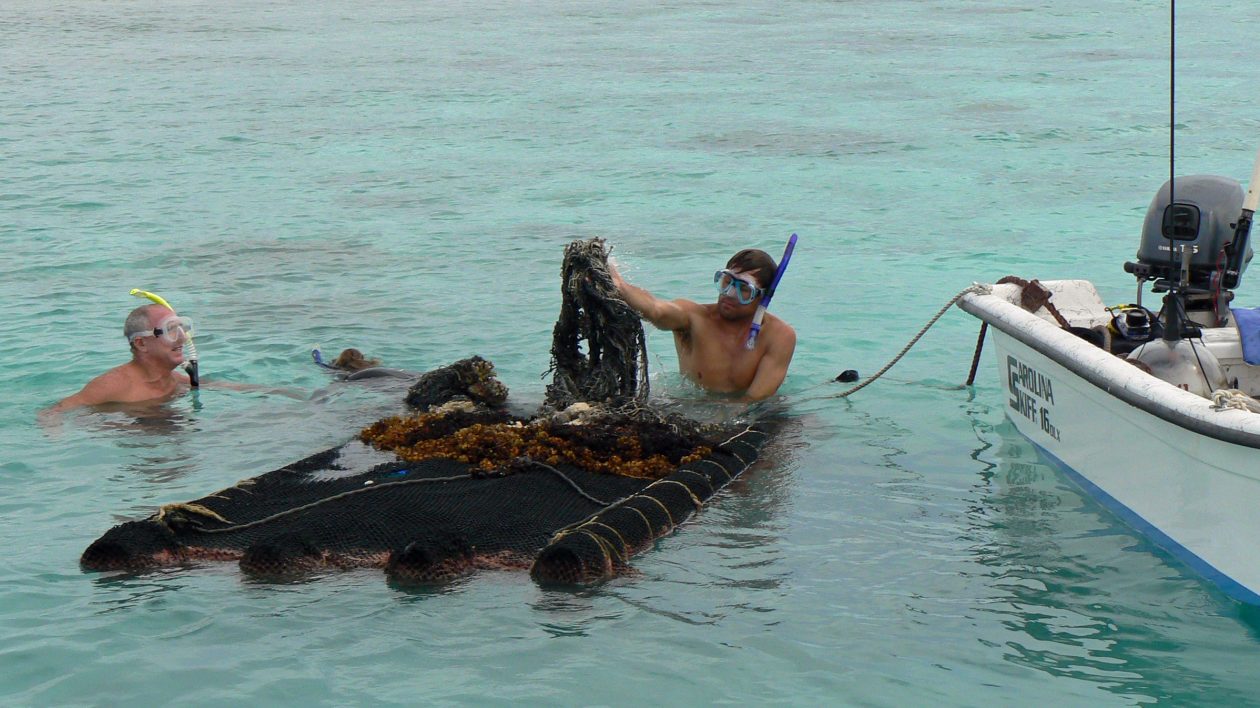
FAD Watch for Palmyra
This day’s task was to deploy strings of underwater cameras, each baited with a cannister of sardines, to record marine life. After setting out a line of cameras, we had to wait a couple hours before retrieving. We used that time to capture and tag trevally.
And demonstrating Pollock’s extreme approach to multitasking, he suddenly announced, “We have a FAD to find.”
And so we searched just outside the breaking waves, and strained, and it became to seem an impossible task once again. But then there was a swirl of sea birds, almost like a tiny island in the water. And there it was. (Or so we thought: this one would later prove to be an unmarked FAD drifting towards Palmyra).
We retrieved the whole device just in the nick of time, pulling up the 170’ length of ropes that dragged beneath in only 400 feet of water. It’s been a long day, and Pollock is grinning.
“From the moment I saw the first one here, I wanted to keep them off the coral reef ecosystem,” he says. “I knew there was a way to do it. To be able to work with the industry, who also has a genuine interest to keep them off the reef, is tremendously gratifying. It’s another step we can do to protect what is so special about Palmyra Atoll.”





there is so much going on at Palmyra.
I had never heard of this, thanks for highlighting the problem. Good information in the article.
Kydd Pollock has always had such a passion for the ocean and anything and everything in, on or around it!
I am so very proud of him and all he has contributed to so many projects for The Nature Conservancy and US Wildlife. His work and dedication is beyond the call of duty and it shows in numerous ways. You GO Kydd…….you are just amazing.